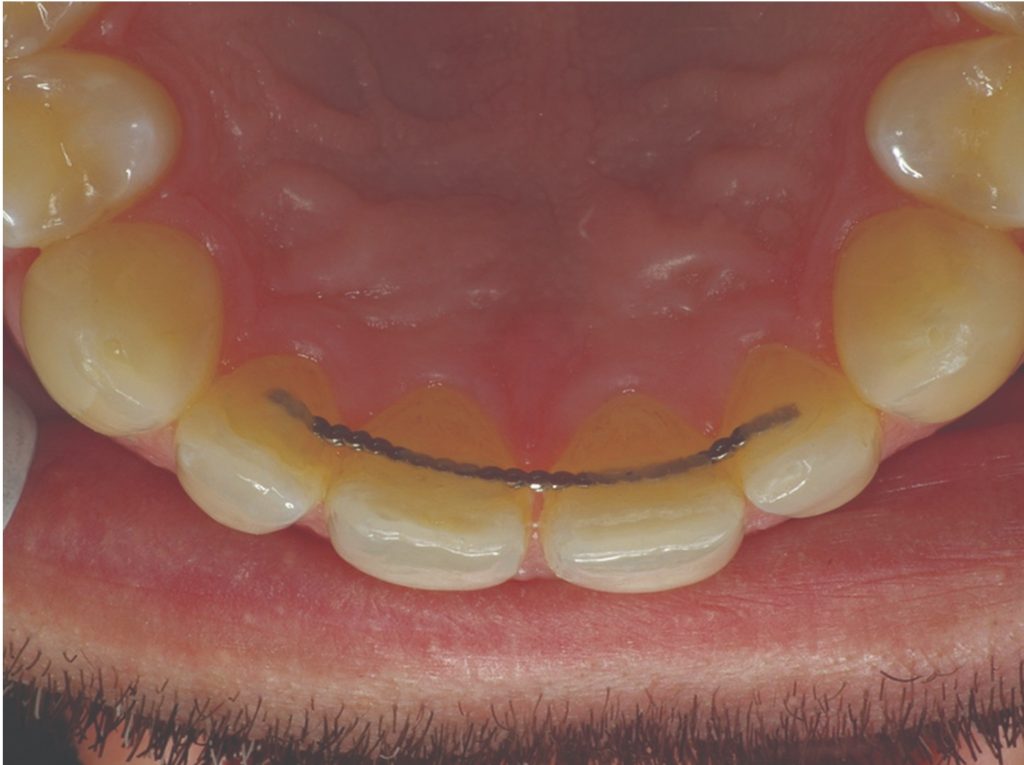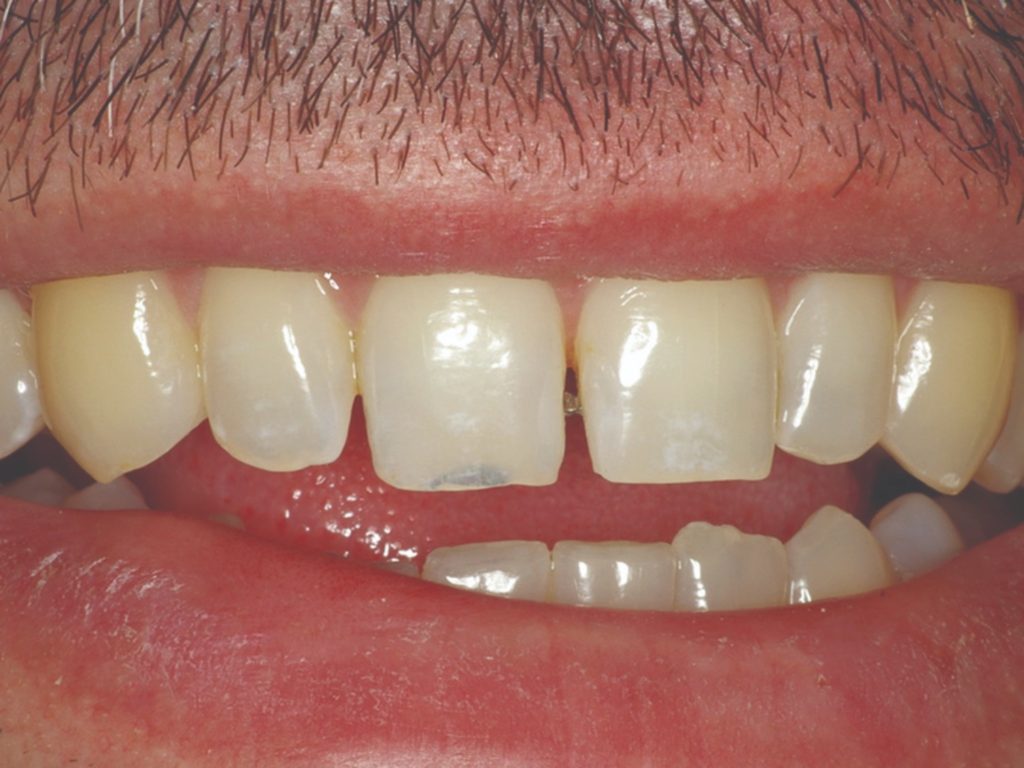Direct restorations can be a relatively low cost and a minimally invasive treatment option for the esthetic case. However, in a case aiming to restore anterior teeth involving a bonded lingual wire, our options of accessibility are limited. Here we outline a case by Dr. Malterud, showing how esthetics restorations in the presence of a lingual wire can be completed with great results.
The Case:
A male patient presents to esthetically rebuild his smile. Patient is particularly concernced about the irregularity of the incisal edge and mismatched embrasure spaces involving the upper centrals.
Treatment plan:
Resin bonding of the two upper central incisors, after removing previous restorations and pathologies.
The two central incisors were air abraded and the previous restorations were removed. This created an adherable surface for the bonded restoration.
Due to the presence of the lingual wire, a traditional mylar matrix could not be contoured and fit to create the desired interproximal contact and profile. Therefore, a “Margin Perfect Matrix” was used. The matrix was fit around the free gingival margin and unfilled bond resin was placed outside the sealer and cured – to achieve adequate isolation and stability of the matrix. Other than isolation, a biologically compatible emergence profile and margin was created, ideal for periodontal health.
Each of the central incisors were restored separately with the use of ortho-phosphoric acid (total etch technique), Ultradent 5th generation bond system, and Supreme Ultra 3M composite.
The matrix was removed and the restorations were polished together with Astropol polished (Ivoclar).
This restorative case shows the potential of dentistry in truly minimally invasive methods. The lingual wire did not have to be removed, with the use of a “Margin Perfect Matrix,” the teeth were prepped minimally, and gingival trauma was as limited as possible.
There is no affiliation with Margin Perfect Matrix in any way – just a nice product.







